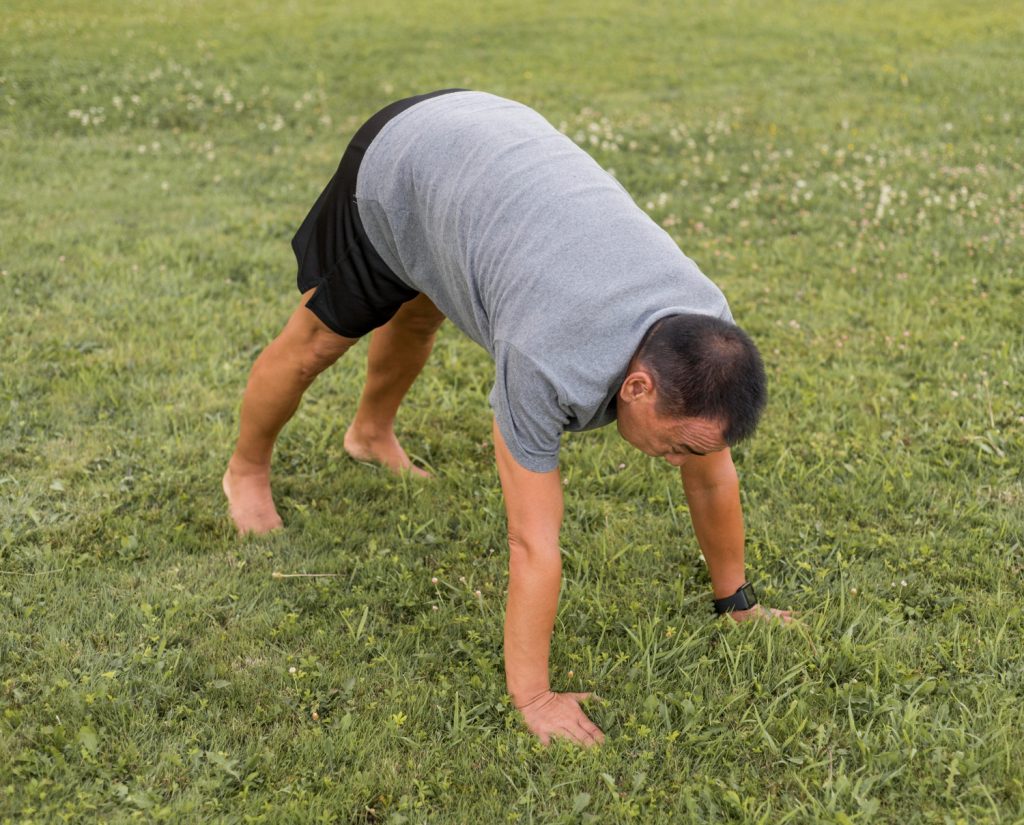Dynamic Neuromuscular Stabilisation offers a revolutionary approach to rehabilitation and performance enhancement
You may not have heard of Dynamic Neuromuscular Stabilization (DNS) yet, but understanding Dynamic Neuromuscular Stabilisation can transform your rehabilitation experience. It’s not just another exercise fad or a quick fix for your pain. DNS is a sophisticated and innovative approach to rehabilitation and performance which draws from developmental kinesiology (the study of human movement patterns from infants). It focuses on retraining the body’s neuromuscular system to promote the most efficient use of our muscles. It uses natural movement patterns that mimic those of infants.
DNS was Developed by Czech physiotherapist Pavel Kolar and so far it has been proven to be effective for athletes and individuals recovering from injuries or managing chronic pain. Dynamic Neuromuscular Stabilisation recognises the human body as a machine designed for optimal, coordinated movements, but often, pain and dysfunction and limitations come from changes to the healthy movement patterns.
The Blueprint of Movement: Developmental Kinesiology
Dynamic Neuromuscular Stabilisation suggests that infants go through a series of natural movement patterns which are innate and follow a predictable sequence. When babies learn to roll, crawl, or stand it comes naturally and the movements are synchronized and seemingly effortless. This is because of an imprinted neurological path which is stored in the growing brain of a baby. DNS goes back to this pathway and uses it as a framework for rehabilitation and resetting movements. Many adult musculoskeletal problems come from these foundational movements being disrupted or changed because of injury, posture, stress, or lack of engagement of surrounding muscles.
Instead of treating symptoms of pain, DNS uncovers the root cause. It focuses on how your entire body, brain, nervous system, and muscles work together for the most cohesive movements. This can lead to improved posture, balance, and movement.
The Difference Between Dynamic Neuromuscular Stabilisation and Traditional Approaches
Many traditional rehabilitation methods often focus on strengthening specific muscles, stretching tight areas, or improving range of motion. While these can be beneficial, they sometimes miss the bigger picture. If your brain isn’t effectively coordinating the activation of those muscles, or if your core stabilization isn’t working properly, pain, instability and recurring injuries will continue.
For example, even if you are doing hundreds of crunches every day to strengthen your core, but the deeper stabilizing muscles aren’t contracting then you might be wasting your time and wondering where the results are! This is where DNS comes in and retrains your brain to activate the right muscles in the right sequence, at the right time, mimicking the natural developmental patterns. Proper engagement of deep core muscles leads to improved joint stability and reduced pain. By understanding Dynamic Neuromuscular Stabilisation, you can improve your overall quality of life.
How Dynamic Neuromuscular Stabilisation Works
Dynamic Neuromuscular Stabilisation techniques are proven to enhance athletic performance. A DNS-trained physiotherapist will guide you through exercises that mimic the natural developmental stages that infants go through such as rolling, crawling, sitting, and squatting patterns. These particular movements aid in automating the activation of your deep stabilizing system.
The key principle is to awaken your “inner core” which is a complex grouping of muscles including your diaphragm, pelvic floor, deep abdominal muscles (transversus abdominis), and multifidus (deep spinal stabilizers). When these muscles work in unison, it creates “intra-abdominal pressure” that acts like an internal balloon, providing remarkable stability to protect your spine and joints.
While undertaking Dynamic Neuromuscular Stabilisation sessions and performing exercises, you’ll also be encouraged to focus on:
- Breathing: Proper diaphragmatic breathing for activating your deep core stabilizers.
- Postural Alignment: Learning to find and maintain optimal alignment.
- Joint Centration: Ensuring your joints are well aligned and stable during movement.
- Global Movement Patterns: Integrating these foundational principles into more complex movements relevant to your daily life or sport.
The goal is to learn in session and then transfer the control and stability into your everyday life and activities. This means teaching your body to move more efficiently and effortlessly, reducing strain and preventing future injuries.
Who Can Benefit from Dynamic Neuromuscular Stabilisation?
DNS is very versatile, and many individuals can expect to feel improvements after treatment, including:
-
- Individuals with Chronic Pain: Especially back pain, neck pain, hip pain, and shoulder pain that hasn’t responded to other treatments.
- Athletes: To enhance performance, prevent injuries, and improve movement efficiency across all sports.
- Post-Natal Women: To restore core function and address issues like diastasis recti and pelvic floor dysfunction.
- Individuals with Postural Problems: To correct imbalances and improve overall alignment.
- Those Recovering from Injury or Surgery: To establish a strong foundation for sustainable recovery.
- Anyone Looking to Improve Movement Quality: From improving your golf swing to simply moving more comfortably in your daily life.
Integrating Dynamic Neuromuscular Stabilisation with Physiotherapy
Enhancing Rehabilitation Outcomes
Physiotherapy often focuses on strengthening specific muscle groups or addressing joint mobility. However, when combined with DNS, physiotherapy can achieve more comprehensive results. By incorporating DNS principles, physiotherapists can help patients develop better movement patterns, leading to improved stability and reduced recurrence of injury.
Tailored Treatment Plans
Each patient presents unique challenges and needs. DNS allows physiotherapists to create personalised treatment plans that address the specific movement dysfunctions of each individual. This tailored approach ensures that patients receive the most effective care, promoting faster recovery and enhanced performance.
Dynamic Neuromuscular Stabilisation and sports performance
Athletes can greatly benefit from DNS as it enhances their ability to perform complex movements efficiently. By focusing on core stability and proper movement patterns, athletes can improve their strength, agility, and overall performance. DNS training can also help prevent injuries by ensuring that athletes maintain optimal biomechanics during their activities.
Conclusion
The effectiveness of Dynamic Neuromuscular Stabilisation is supported by numerous studies and testimonials. DNS offers a revolutionary approach to rehabilitation and performance enhancement. By focusing on the intricate relationship between the nervous system and movement patterns, DNS provides individuals with the tools they need to achieve optimal stability and function. Whether you are an athlete striving for peak performance or someone seeking relief from pain, DNS can be a valuable addition to your health and wellness journey. If you are interested in exploring how DNS can benefit you, consider booking an appointment with one of our senior Physiotherapists who can guide you on this journey.
FAQs
How does DNS differ from traditional physiotherapy?
While traditional physiotherapy often focuses on isolated muscle strengthening and joint mobility, DNS takes a more holistic approach. It emphasises the coordination of muscle groups and the importance of stabilising systems, aiming to restore natural movement patterns rather than just addressing symptoms.
Is DNS suitable for everyone?
Yes, DNS can be beneficial for individuals of all ages and fitness levels. Whether you are an athlete looking to enhance performance, someone recovering from an injury, or an individual managing chronic pain, DNS can give you insight and techniques to improve your movement and overall well-being.
What can I expect during a DNS session?
During a DNS session, a trained practitioner will assess your movement patterns and identify any dysfunctions. You will then engage in exercises that mimic developmental positions, helping to activate your stabilising muscles and improve coordination. The focus will be on achieving optimal movement patterns rather than simply increasing strength.
How long does it take to see results from DNS?
The time it takes to see results from DNS varies from person to person. It depends on the level of dysfunction and the consistency of the exercises. Many patients report improvements in their movement quality and pain levels within a few sessions, while others may require a more extended period of practice to achieve their goals. Consistency and patience are key.
Can DNS be used in conjunction with other therapies?
Yes. DNS is very compatible and can complement many other treatments, including manual therapy, chiropractic care, and traditional physiotherapy. By integrating DNS principles, practitioners can enhance the effectiveness of their treatments and provide a more comprehensive approach to your overall condition.
Is DNS painful?
DNS exercises should not be painful. They are designed to reduce pain by restoring proper movement patterns and stability. You may feel your muscles working in new ways, but it should not cause pain. Please communicate to your physiotherapist in case of any pain so they can adjust the exercise.
Are there any contraindications for DNS?
While DNS is generally very safe, there might be some medical conditions where certain exercises need to be modified or avoided. Please inform the therapist of your medical history and they will conduct a thorough assessment to determine the most appropriate approach for you.
Will I have to do these exercises forever?
The goal of DNS is to retrain your brain and body to automatically engage your deep stabilizing system. Once these patterns become engrained, they should become your natural way of moving. While maintaining a level of movement awareness and occasional practice of foundational exercises can be beneficial for long-term health, the aim is for these movements to become intrinsic, not a lifelong chore.


